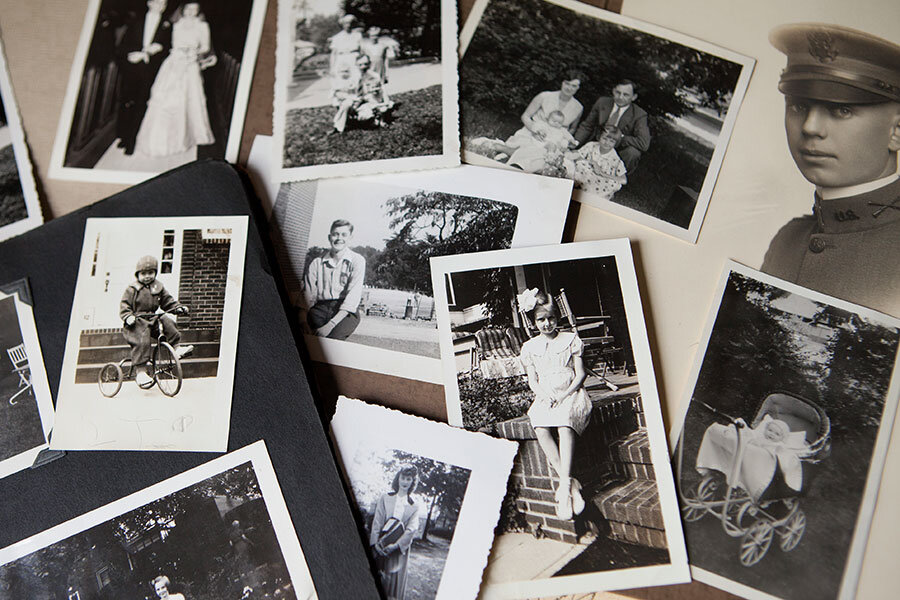I prefer old-fashioned nostalgia
I’ve got drawers full of family photographs here, some even going back to the Civil War. Dad’s childhood photo album is two slabs of wood connected by leather straps. All the photos are tiny, and they’re glued in. It’s possible the straps and the glue were donated by the family mule.
Mom’s photo albums were put together more carefully, with ornate paper corners and neat captions in her handwriting.
All evidence suggests that the world used to be black and white, and did not spring into color until after I was born. There is a bright flash of red and gold illuminating me in a playpen, and then the world had to rest up for a few more monochromatic years before giving it another whirl.
It wasn’t until I got a flatbed scanner and began trying to preserve some of these old photos that I realized just how degraded many of them are. The black-and-white ones are stellar. Even blown up, the details stand out sharply. Not only can you tell that my father wore a dress as a toddler more than a hundred years ago – something that he had never thought to bring up in conversation – but you can see every button and bow and pleat on it.
The color photos, though, are awful.
Clothing deteriorated into pock-marked, indistinct pools. Faces oranged up. Discrete areas of the photographs ran together like sauces on a plate. Edges looked burned. From any archival standpoint, they are a disaster.
Maybe it’s fitting, in a way. My own memories seem to have lost a lot of clarity, too. They haze over and blur together, speckled with uncertainty. My childhood shot out as quick as a Polaroid and has been dimming ever since. I’m no longer sure if I actually remember any given event or if I’ve hammered some version of it together using the photographs as a scaffold. And, with the cost of film and developing, there weren’t that many of them anyway.
Today, photos are pretty much free. Any baby coming into the world now can count on being snapped thousands of times a year and be recorded in some ethereal planetary scrapbook on a network of phones, cameras, devices, and the cloud, whatever that is. A person should be able to string together a pretty good narrative of her life with all those data. And every shot is a miracle, pristine.
But now, with the right application, you can take a brand-new photograph and make it look as crummy as the old ones, right off the bat. I’m at a loss to understand why you would want to do this, but evidently, there is a market for nostalgia for times you haven’t even lived through.
So I say, bring it on. Your gigantic flat-screen HDTV should wink out at midnight and leave you with nothing but a fading star and a reason to go to bed already.
Your GPS should quit giving you directions and instead recite a Burma-Shave poem, tell you to pull over to the side of the road, and then send little puffs of blue smoke out from under your hood.
Go ahead and pay for things using your phone – but let’s do it old-school. If it’s a Friday night, you can try to buy something, but it won’t go through until Monday after 10 a.m., when the screen would depict, for 15 minutes, the rear view of the person in front of you in line at the bank.
You want nostalgia? Download my own salute to Mom and Dad: the Whiny App. It would detect any sign of petulance on your part and then give you something to cry about.





